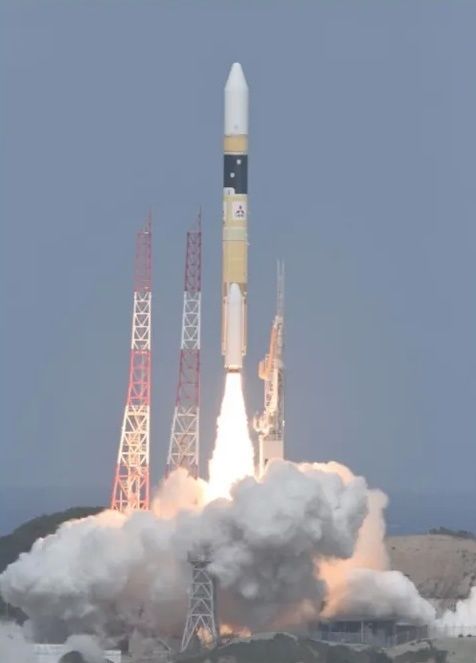26.09.2024
The IGS-Radar 8 satellite lifted off at 1:24 a.m. ET on Thursday (Sept. 26).

A Japanese H-2A rocket launches the IGS-Radar 8 spy satellite on Sept. 26, 2024. (Image credit: Mitsubishi Heavy Industries via X)
Japan's workhorse H-2A rocket flew for the second-to-last time early Thursday morning (Sept. 26).
An H-2A topped with a secret spy satellite called IGS-Radar 8 lifted off from Japan's Tanegashima Space Center on Thursday at 1:24 a.m. EDT (0524 GMT and 2:24 p.m. local Japan time).
The rocket deployed the satellite as planned, according to Mitsubishi Heavy Industries, which builds and operates the H-2A.
According to NextSpaceflight.com, IGS-Radar 8 is headed to sun-synchronous orbit (SSO), a polar path in which satellites cruise over patches of Earth at the same local solar time each day. SSOs are common destinations for spy and weather satellites, because they provide consistent lighting conditions over time.
IGS-Radar 8 will be operated by Japan's Cabinet Satellite Information Center, like other members of the IGS ("Information Gathering System") fleet. As its name suggests, the spacecraft will study Earth in radar light, collecting data for intelligence purposes and for natural-disaster monitoring.
The IGS fleet of satellites includes both a radar and an optical line. Indeed, the most recent H-2A launch, which occurred this past January, sent the IGS-Optical 8 spy satellite to SSO.
Mitsubishi Heavy Industries built and operates the H-2A, which debuted in 2001. The 174-foot-tall (53 meters) rocket now has 49 missions under its belt, all of them successful except one; it failed during the November 2003 launch of the IGS 2 satellite.
The end is near for the workhorse H-2A, however. It will be retired after its 50th launch, which could occur before the end of the year. The H-2A will be replaced by the new H3, which has launched three times to date, most recently on June 30.
Quelle: SC
